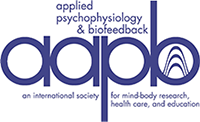The Biofeedback Odyssey: From Neal Miller to Current and Future Models of Regulation
Neal Miller's research on animals and humans launched the field of self-regulation, enabling individuals to take a more active role in their health and well-being. However, his inquiry into whether autonomic operant conditioning occurs remains open to debate. This article contends that present-day biofeedback therapists continue to be confronted by this dilemma. In addition, the authors suggest other models of biofeedback in which the role of the practitioner has been expanded and to which a large repertoire of self-regulation techniques have been added. They propose that, in the future, the regulatory capacity of interpersonal interactions is recognized as in the proffered model of biofeedback, dyadic biofeedback (DBF). DBF allows for real-time training of interpersonal interactions, emphasizing learning through direct observation and active involvement, thus making a return to Miller's model.Abstract

Plausible models for today's clinician. (A) Through a process of trial and error, the subject learns autonomic regulation. (B) A coach teaches relaxation methods while using the physiological feedback to enhance motivation and application. (C) Bringing emotions and thoughts into awareness allows subjects to observe what went on in their minds and to share this with the therapist. This process reveals the relationship between thoughts and emotional/physiological reactions.

Biofeedback models making use of the regulatory capacity of interpersonal interactions. (A) Presence of the therapist is acknowledged and affects the client's ability to self-regulate. (B) Dyadic biofeedback, the full intersubjective model: Another screen is added, and the therapist's psychophysiological reactions are also displayed. (C) Dyadic biofeedback when the partner is a significant other (e.g., the therapist works with a couple or with a parent and child).




Contributor Notes
